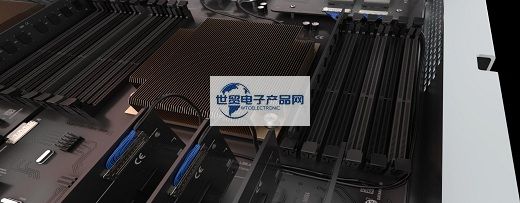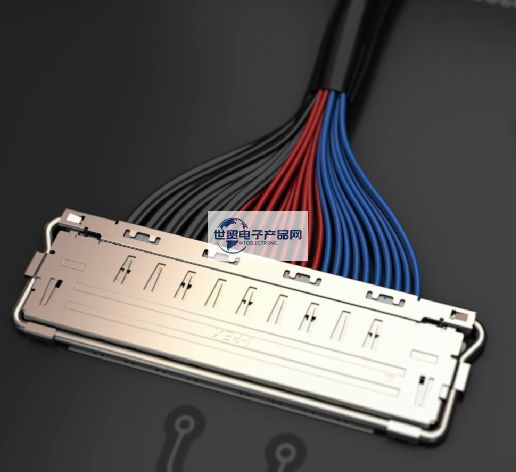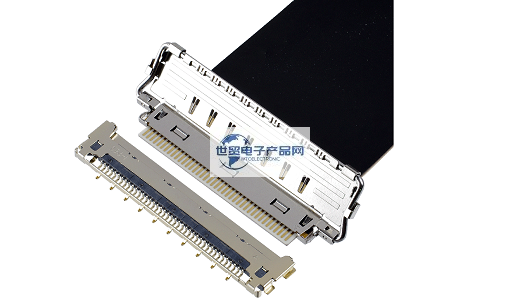Categorization:Product Information
As data transfer rates increase, so do the cable assemblies required for servers. Because printed circuit boards can no longer keep up with transmission rates, high-speed cables play a major role. But the importance of low-speed cable assemblies has not changed. Low-speed components are still commonly used in power distribution, low-speed signal transmission and auxiliary lines. Low-speed components are rarely defined by industry standards, while high-speed signals are defined by very frequent updates from standards committees. As server density increases, so does power consumption and heat generation. Therefore, all cable assemblies need to be minimized regardless of standard, so that the server system is easy to install without interfering with the flow of air between the components of the server for heat dissipation. The advantage of low-speed cables versus short-range high-speed cables is that smaller wire diameters can be used (except for power supplies, of course). High-density connectors and flexible circuit boards require the use of smaller diameter cables. Using smaller conductors helps to increase interconnection density and save space needed for wiring and cable assembly connections.

------------------------------------------------------------1. Cable assemblies with small bending radius and easy wiring: For high-speed and low-speed internal cables, flexibility is crucial. If the cable can be routed along the edge or between the memory and the chassis, the space can be efficiently utilized. The small bending radius can not only reduce the space occupied by the cable, but also effectively utilize the edges and corners of the casing. If the flexibility is insufficient, the assembly may require a larger bending radius, which takes up more space. Sometimes the cable needs to be routed in two directions, such as up and left. Flat cables need to be bent several times, so it is difficult to turn in two directions, and the wire harness can be easily turned only by twisting. The truly versatile connector is compatible with flexible circuit boards, discrete wires and high-speed impedance control lines. USB or Ethernet is sometimes used as an access interface. They can be wired with low speed cables.
2. CABLINE ® series connectors produced by Japanese I-PEX Company can use various wires: on the front panel of the server that requires low-speed cable assemblies, there will be indicator lights displaying status, small display screens, and fashionable input/output interfaces such as USB. The cable assembly used for low-resolution front panel displays includes multiple electronic wires, and possibly several pairs of high-speed cables. The LCD display of the small front panel can be installed anywhere in front of the cabinet, sometimes on the lifting lugs. These locations are near the front of the cabinet pillars, and because the server is installed here, there will be a lot of sheet metal here. There is a limited amount of space cables can take up, and narrow pitch cable assemblies help make use of that limited space. Low-back, miniaturized applications Extremely thin coaxial assemblies and electronic wire assemblies can be used in extremely low-height designs. Whether high or low speed, these components come in a low cup option, saving precious space inside the server. It is commonly used in drones, VR devices, and laptops that focus on space saving and lightweight. I-PEX very thin coaxial connectors and electronic wire connectors; I-PEX offers a variety of narrow pitch output/input connectors. The I-PEX CABLINE ® Series offers a variety of centerlines and chimeric directions. It can be terminated with electronic wires, shielded wires, impedance-controlled ultra-thin coaxial lines and dual-core coaxial lines, and even flexible circuit boards (FPCs). If high speed is required, high speed and impedance control cables should be selected. Low-speed cable assemblies can use inexpensive cables. Although CABLINE connectors can be used for high-speed signal transmission, the link performance between terminals depends on the cable. Take the CABLINE ®-VS extremely thin coaxial connector as an example, which has a pitch of 0.5 mm and an option of 10 to 50 pins. Because the right-angle female base and straight male base mounted on the circuit board are used, the interface is parallel to the circuit board after installation. The options that can be connected are electronic wires, shielded wires, extremely thin coaxial lines, and dual-core coaxial lines. It is also compatible with the FPC version of the male seat. CABLINE ®-VSF All wiring options share a board mount female. FPC is an independent option, and the component only uses FPC. Different wires can be mixed with the same component. It is common for electronic cable assemblies to contain some high-speed cables. If high-speed cables are required, very thin coaxial lines can be used for differential signal transmission. Shielding options are also available, providing 360-degree shielding to the connectors, helping to suppress EMI.
3. CABLINE ®-CA IIF produced by Japanese I-PEX Company is suitable for FPC components and can be fitted with the standard CABLINE ® CA-II female seat:

---------------------------------------------------------------------------3. About Shimao Electronic Product Network platform introduction and sales product brief description: Shimao Electronic Product Network is a professional, accurate and vertical comprehensive product sales platform for the electronic industry focusing on the supply, demand and sales of connector harness and cable products! Specializing in the production/sales of {Connector Harness Cable Products}; If you have [low-speed cable assembly high-speed cable assembly products] purchase/purchase, sales/resource and promotion needs, please contact us through the following methods.